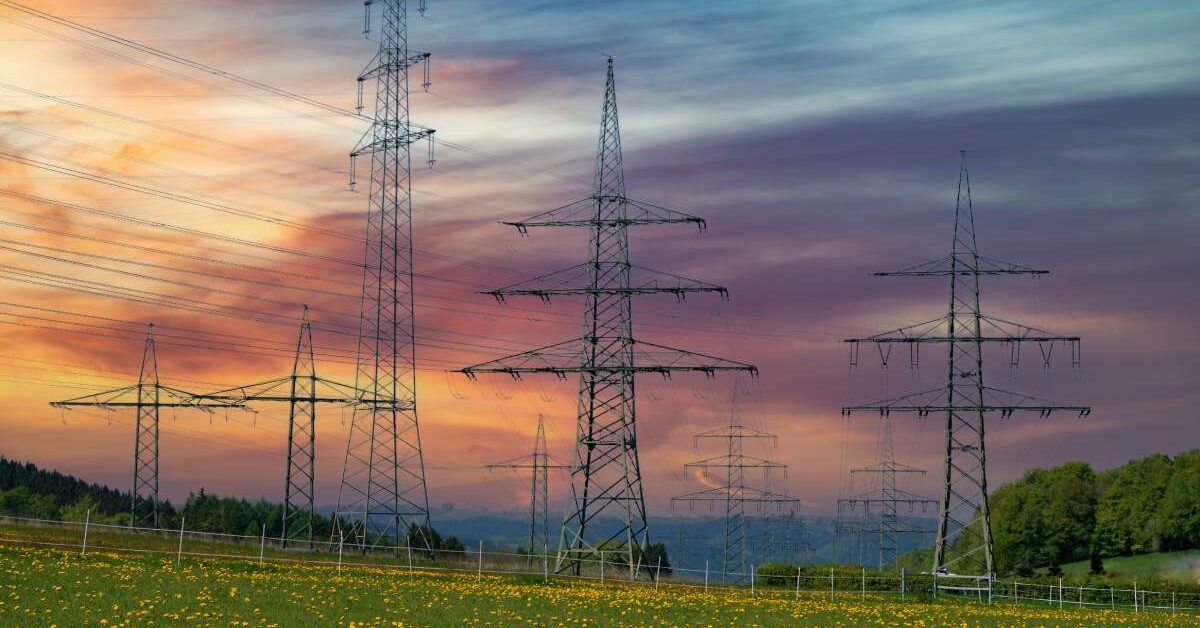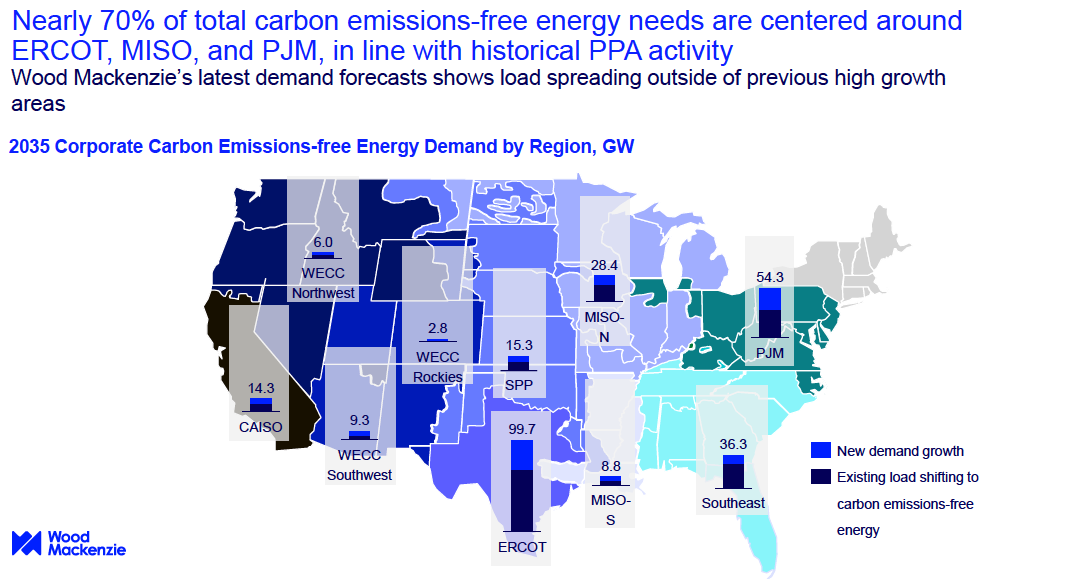New Report: Corporate Demand for Carbon Emissions-free Electricity Grows to 275 GW Over Next Decade

Clean Energy Buyers Association highlights the need for more transmission to support 21st century industries
Large companies are set to drive an unprecedented demand for at least 275 gigawatts (GW) of carbon emissions-free energy by 2035 from both new and existing electricity load, according to a report released today by the Clean Energy Buyers Association (CEBA), in collaboration with Wood Mackenzie.
That’s equivalent to about one-fifth of total installed electricity generating capacity in today’s electric grid across the United States. Regional transmission organizations (RTOs) should understand that the ever-increasing demand for electricity will need to be supplied by a variety of reliable, low-cost, carbon-emissions free energy sources.
“Growing the grid for energy and economic dominance means updating the existing grid and building out new electricity generation sources as well as transmission,” said CEBA CEO Rich Powell. “With inefficient transmission buildout slowing the pace for bringing new generation online, more efficient regional transmission can lower costs for consumers and boost reliability. Future planning should consider corporate demand for carbon emissions-free energy. States and regions that proactively plan for corporate procurement trends will be strongly positioned to capture potential economic growth.”
The report, “U.S. Corporate Carbon Emissions-Free Energy Demand Outlook” provides a forecast of corporate emissions-free energy demand trends across the United States. The analysis assumes fairly conservative demand growth compared to other recent forecasts, such as that of Grid Strategies, because Wood Mackenzie assumes supply-side constraints driven by transmission bottlenecks and interconnection queue backlogs will rein in how fast the nation can meet requests for more electricity.
Key findings from the report include:
- – Driving Load Demand: Technology and certain manufacturing sectors are expected to see a 7% compound annual growth rate in electricity demand, primarily driven by demand from data centers. Accounting for both growth in new energy demand and demand from existing facilities, total demand for carbon emissions-free energy is set to grow at a 7.7%. With this new demand growth, combined with shifting existing loads to clean capacity, large load sectors overall will still make up nearly half of procurement through 2035.
- – Regional Dynamics: The Electric Reliability Council of Texas (ERCOT), PJM (covering the Mid-Atlantic), and the Midcontinent Independent System Operator (MISO) are forecasted to dominate nearly 70% of current and future clean energy procurement activity, in line with historical activity, although the Southeast and West are poised for emerging demand growth. All regions will be better positioned to capture economic growth by proactively planning for the resource needs that improve transmission needed for commercial, industrial, and institutional energy customers.

Rapidly growing demand for energy across the United States offers the potential for vast economic leadership opportunities in the coming decade and beyond. Capturing that opportunity rests on the ability to provide growing industries with what they will need: access to electricity.
Recent Federal Energy Regulatory Commission requirements direct grid planners to “consider corporate commitments that are likely to affect long-term transmission needs.” CEBA’s report aims to give grid operators and transmission planners an indicator of the scale of corporate procurement for clean energy that can improve grid operations in significant ways. The report also should inform proactive, comprehensive transmission planning that enables long-term economic growth.
CEBA’s tracking shows large energy customers have contracted for over 91 GW during the last decade, which is equivalent to 40% of all carbon emissions-free capacity installed in that time. This added capacity will help keep electricity costs low for consumers while also enabling electricity generation for millions of homes and small businesses in the United States.
